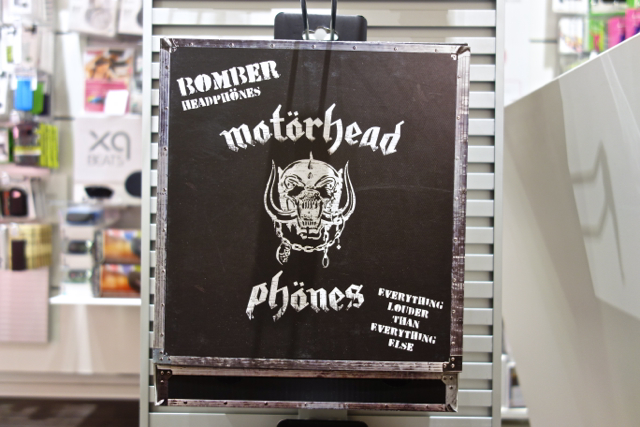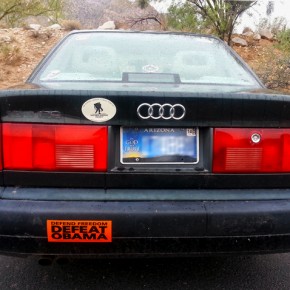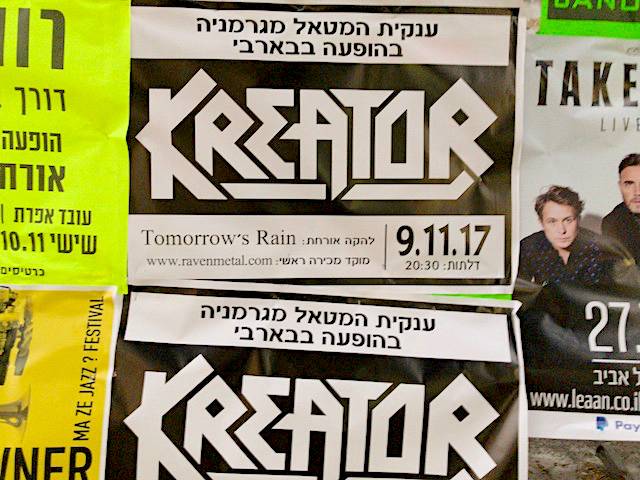Rock bands lending their ‘brand name’ to consumer products – surely the epitome of ‘selling out’? The Motorhead phone cover would seem to be the latest – and certainly not the worst – in a long tradition of branded merchandise, whose apotheosis must surely be the Kiss coffin. The critique of this kind of branding is almost as familiar as the branding itself. It subordinates art to commerce, it uses fans as cash cows, it dilutes the mystique and above all it cheapens the band associated with it.
What is Motorhead’s brand identity? Motorhead is dirty, loud, uncivil, in-your-face – embodied in the logo’s jagged lettering and the mascot ‘Snaggletooth’ with his demonic fanged grin. Motorhead is also about sticking to your guns, living life your way, never giving in – embodied in Lemmy’s Marlboro and Jack Daniels-fuelled hoarseness.
To buy a Motorhead-branded phone cover is, at some level anyway, to seek to identify oneself with their uncompromising defiance. But this would seem to be a self-contradictory gesture – can displaying the brand of someone else mark one as anything other than a follower? And does this not make Motorhead themselves, who presumably licensed their brand to be used on consumer products of this kind, simply cynical money-grasping mercenaries?
The problem with this argument is that its reductio al absurdo is the rejection of any kind of fandom. All fandom is, at some level at least, a form of following. To be a fan is to identify oneself with something other than oneself, something that one cannot provide for oneself. To buy an album, attend a concert or wear a t-shirt is to lose something of oneself, to revel in fantasy and projection. Buying a Motorhead mobile phone cover is, in this view, just another kind of fan activity. And Motorhead themselves have sold out no more and no less than when they first accepted money to perform.

This is, to be clear, not a view of fandom that I myself subscribe to. Identity itself is always put together from things external to oneself. In being attracted to some people and things more than others, we are all fans at some level. But taking the critique of fandom to its limit is a good way to clear the ground in order to consider what the limits of branding should be. At what point does licensing your brand undermine one’s integrity and ‘message’? At what point does fandom become slavish conformity? At what point does a band’s commercial activities become exploitation?

In the case of Motorhead, we can be indulgent. Their relentless touring, the constant stream of new material they produce and their indefatigable consistency all gives them an integrity that no amount of merchandising can completely destroy. Their fans’ loyalty is far from mindless conformity. Go to a Motorhead gig and you’ll witness fans and band locked in a symbiotic embrace, a mutual celebration of each other’s resilience.
The problem is that Motorhead are, after well over three decades of constant activity, such an institution that the power of their brand has seeped out of this closed circle. Whether you love or hate his music, Lemmy exudes an irresistibly decadent, timeless air. The wheel of fashion has turned and metal imagery has begun to appeal to hipsters and fashionable young things alike. The Motorhead logo has just enough frisson to be exciting, but is classic enough to be reassuring.
To buy a Motorhead phone cover is to both celebrate and degrade the brand. The band will survive any amount of merchandising of course. But, as the imagery becomes ubiquitous, so Motorhead’s work may become increasingly a footnote to their new hyperreality.
Photographs courtesy of Joel Schalit





